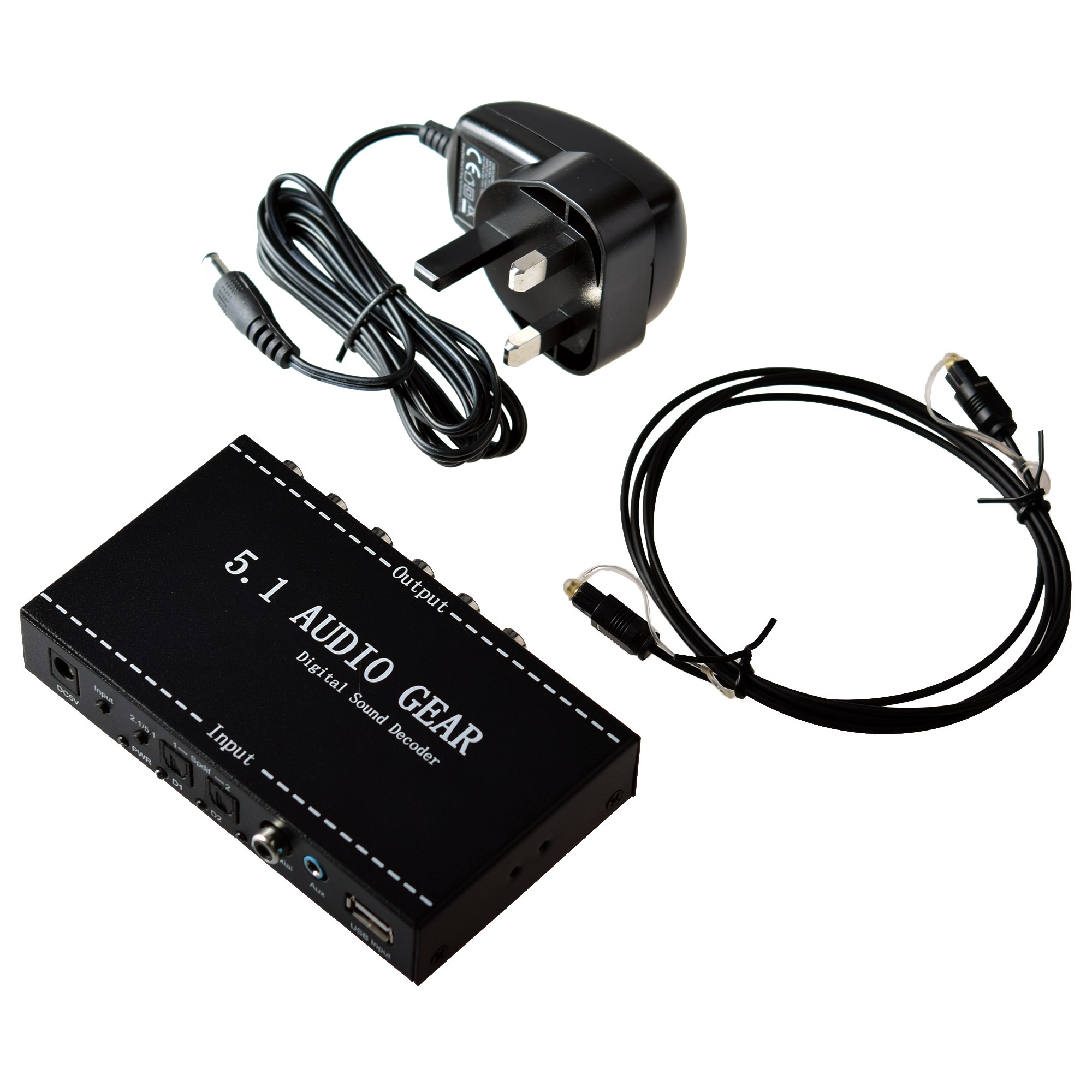

The almost universally employed '5.1' term, then, refers to that system's five full-bandwidth channels plus its additional, restricted-bandwidth channel. Various speaker placement and sound modes. However, this surround format could also be denoted legitimately as 2.0, as the matrixed signal is conveyed on just two channels, Lt and Rt, as we have seen.
#Ac3 dts decoder series
This lower rate is 1/200th of the principal rate, or 0.005, but the marketing guys weren't keen on promoting a '5.005' system, hence the simplification to 5.1! In fact, the spectrum from 5-120Hz actually occupies roughly five octaves in the 12-octave span to 20kHz - that is 40 percent of the entire bandwidth!Īs a further example of the use of these descriptive denotations, the matrixed Dolby Surround system described in Part 2 of this series (see SOS September 2001) is often referred to as 3/1, to indicate three independent signals intended for frontal loudspeakers, plus a single signal for the rear (even though this is usually shared among multiple speakers). The standard sampling rate is 48kHz, but the LFE is sampled at 240Hz (providing a maximum audio bandwidth of 120Hz). The reason for the use of the '0.1' term in 5.1 systems is because the LFE channel, which feeds the subwoofer in 5.1 systems, uses a much lower sampling rate than the main channels. The alternative would be a 'restricted-bandwidth channel', which is generally understood to mean a medium supporting low-frequency signals only - say between 5 and 120Hz. What is meant by the term 'full-bandwidth channel' here is a medium capable of conveying audio signals spanning the audible frequency range between at least 20Hz and 20kHz.

The second form, 2.0, implies that just two 'full-bandwidth' channels are required to convey the signal. The first of these terms, 2/0, means that the system provides two independent signals intended for frontal loudspeakers, with none for the rear. By way of example, an ordinary stereo signal can be denoted as either 2/0 or 2.0 - and the use of the slash or the point is critical to the meaning. Surround systems are frequently defined in terms of the number and nature of independent sound signals being conveyed, or their intended allocation to physical loudspeakers in the room for reproduction. However, the commercial 'discrete-channel' surround sound formats (including 5.1) require the loudspeakers to be in precisely defined positions relative to the listener in order to reproduce the intended surround sound field. As long as the decoder in an Ambisonics system understands where the speakers are positioned in your room, you can put them almost anywhere you like. There are in fact many alternative modern surround sound arrangements with different, but related descriptors.Īs I explained last month, the Ambisonics (B-format) surround system is the only format which is completely independent of the loudspeaker arrangement in the listening room. The term '5.1' is seen by many as the definition of surround sound, without really understanding what these seemingly innocuous numbers actually represent. The system, including the requirement for a subwoofer, was essentially derived from the experience gained with the 70mm film format in the cinema. This was actually defined as long ago as 1987 (although it didn't become a commercial reality until 1993) and generally requires three full-range speakers across the front of the listener, two behind, and a subwoofer (fed by the so-called low-frequency effects channel or LFE, of which more in a moment). To start with, it is important that everyone understands the loudspeaker format adopted for most current surround systems - the infamous '5.1' arrangement. In particular, I will explain the terminology, features and capabilities of these systems with the aim of providing a basis from which to explore some practical implementations and applications of surround in further parts of this series. For the next couple of months, I want to focus attention on the various surround sound systems being promoted today, mainly in association with DVD for the domestic market, and also in the cinema. The previous parts of this series have all been concerned with the earliest forays into surround sound, such as those from the quadraphonic era, and the surviving systems from that period, such as the matrixed Dolby Surround format and Ambisonics. SOS's guide to the world of surround sound comes right up to date with the first of two looks at the modern 5.1 standard, and its use with DVD‑Video and DVD‑Audio discs.


 0 kommentar(er)
0 kommentar(er)
